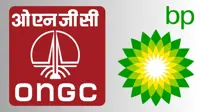India’s GDP growth hits a 2-1/2-year high of 5.7% in April-June FY’15
30 Aug 2014
India's economy expanded at 5.7 per cent in the April-June quarter - its fastest pace in two-and-a-half years - on the back of a turnaround in manufacturing boosted by measures to help the economy recover from the longest slump in a quarter of a century.
 The country's gross domestic product (GDP) grew 5.7 per cent in the quarter ended 30 June 2014, sharply higher than the 4.6 per cent in the previous quarter, signalling a revival in the economy.
The country's gross domestic product (GDP) grew 5.7 per cent in the quarter ended 30 June 2014, sharply higher than the 4.6 per cent in the previous quarter, signalling a revival in the economy.
GDP at factor cost at constant (2004-2005) prices for Q1 of 2014-15 is estimated at Rs14,38,000 crore, against Rs13,61,000 crore in Q1 of 2013-14, showing a growth rate of 5.7 per cent over the corresponding quarter of the previous year, data released by the Central Statistics Office (CSO) showed.
GDP at factor cost at current prices in Q1 of 2014-15, is estimated to have expanded by 11.9 per cent to Rs26,97,000 crore compared to Rs24,11,000 crore in Q1 of 2013-14.
GDP at current market prices in Q1 of 2014-15, is estimated to have grown 11.6 per cent to Rs28,43,000 crore, from Rs25,47,000 crore in Q1 of 2013-14. At constant (2004-2005) prices, the GDP at market prices is estimated to have increased by 5.8 per cent to Rs15,16,000 crore in Q1 of 2014-15 compared to Rs14,32,000 crore in Q1 of 2013-14.
Asia's third-largest economy expanded by less than 5 per cent for two straight years, amidst policy logjams, project delays and a string of corruption scandals.
The buoyancy in economic growth during the first quarter of the current financial year was aided by a 10.2 per cent growth in utilities like electricity, gas and water supply, a 10.4 per cent growth in financing, insurance, real estate and business services nd a 9.1 per cent growth in community, social and personal services, official data released on Friday showed.
Other economic activities that showed growth compared to the same quarter last year include construction (4.8 per cent), manufacturing (3.5 per cent), trade, hotels, transport and communication (2.8 per cent), agriculture, forestry and fishing (3.8 per cent), and mining and quarrying (2.1 per cent).
The key indicators of construction sector, namely, production of cement and consumption of finished steel registered growth rate of 9.5 per cent and 0.7 percent, during Q1 of 2014-15.
Among the services sector, the key indicators of railways, namely, the net tonne kilometres and passenger kilometres have shown growth rate of 3.3 per cent and 5.5 per cent, respectively, during Q1 of 2014-15.
In case of other transport sectors, passengers handled by the civil aviation, cargo handled by the civil aviation and cargo handled at major ports recorded growth rates of 7.5 per cent and 6.2 per cent and 4.3 per cent, respectively, while the sales of commercial vehicles registered the decline of 16.1 per cent during Q1 of 2014-15 over Q1 of 2013-14.
The other key indicators, aggregate bank deposits and bank credits have shown growth rates of 12.4 per cent, and 13.3 per cent, respectively, as of June 2014 as against growth of 13.5 per cent and 13.5 per cent, respectively, as on June 2013.
''With improvement witnessed in some important sectors, including manufacturing as well as in the performance of exports (that registered a growth of 11.5 per cent at 2004-05 prices), along with the measures taken by the government, the economy can be expected to show further improvement in the remaining part of the year,'' the ministry said.
Capital goods output, a broad gauge of investment activity, grew 13.9 per cent in April-June, compared to a contraction of 3.7 per cent in the same period of the previous year, in a sign for capacity addition.
Gross fixed capital formation (GFCF) at current prices is estimated at Rs8,14,000 crore in Q1 of 2014-15 against Rs7,.32,000 crore in Q1 of 2013-14. At constant (2004-2005) prices, the GFCF is estimated at Rs4,96,000 crore in Q1 of 2014-15 against Rs4,63,000 crore in Q1 of 2013-14.
The slide in the services sector, which accounts for more than two-thirds of the economy, appears to have been arrested.
All the major components of the services economy - hotels, communication, trade and hotels - have recorded growth rates higher than the previous year, although they are still far lower than the decadal average.
.webp)



.webp)


.webp)

























